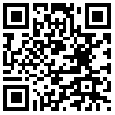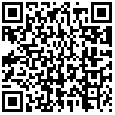Detalii
Încărcaţi Docx
Citiţi mai multe
Venezuela is an immigrant based country, consisting of four main ethnic groups: Around 52% of its population are from the Mestizo, a group with a mix of European, Amerindian, and African ancestries; 42 % are of a European descent; 4% are of an African descent; and 2% population are native Venezuelans. The earliest settlers of ancient Venezuela are generally believed to be Siberians who crossed the Bering Strait, connecting Russia and Alaska, during the last glacial period about 23,000 years ago. Though separated into different groups today, DNA research by Harvard Medical School revealed a common ancestry. Their ancestors moved into North America, and then later to Central and South America. Evidence shows that the earliest habitants of northwest Venezuela traces back more than 15,000 years ago. The agriculture system of indigenous Venezuelan was established as early as the 1st millennium. By the end of the 15th century, an estimated 300,000 to 400,000 indigenous people inhabited the current Venezuela region. Today there are 51 indigenous groups currently living in Venezuela, and 44 groups are officially recognized by the government. The largest groups include the Wayuú, Pemón, Warao, Yanomami, and Kariña peoples. The picturesque Canaima National Park, a UNESCO World Heritage site, is home to the Pemón tribes. The Pemón's houses are huts with walls made of clay or bark, and roofs made of palm leaves. Besides collecting the food from the wilderness, Pemón men prepare the soil for planting and the women garden, harvest, and transport crops.Pemón's living area, the Gran Sabana, with its gorgeous sceneries, has become a tourist attraction place and provides the main source of income for the locals. For the last three years, while the economy and tourism have been slow, the Pemón people in the Kavanayén village have resisted lucrative offers from the mining industry, and have returned to a more environmentally responsible way of living, with traditional farming. The traditional farming fosters teamwork in families and the community. By working together, they also reduce their carbon footprint on the planet. This keeps their spirits and optimism high, even through difficult times.














